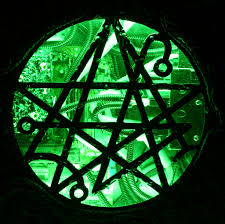Cool Wallpaper Backgrounds Biography
Wallpaper, using the printmaking technique of woodcut, gained popularity in Renaissance Europe amongst the emerging gentry. The elite of society were accustomed to hanging large tapestries on the walls of their homes, a tradition from the Middle Ages. These tapestries added color to the room as well as providing an insulating layer between the stone walls and the room, thus retaining heat in the room. However, tapestries were extremely expensive and so only the very rich could afford them. Less well-off members of the elite, unable to buy tapestries due either to prices or wars preventing international trade, turned to wallpaper to brighten up their rooms.
Early wallpaper featured scenes similar to those depicted on tapestries, and large sheets of the paper were sometimes hung loose on the walls, in the style of tapestries, and sometimes pasted as today. Prints were very often pasted to walls, instead of being framed and hung, and the largest sizes of prints, which came in several sheets, were probably mainly intended to be pasted to walls. Some important artists made such pieces, notably Albrecht Dürer, who worked on both large picture prints and also ornament prints intended for wall-hanging. The largest picture print was The Triumphal Arch commissioned by the Holy Roman Emperor Maximilian I and completed in 1515. This measured a colossal 3.57 by 2.95 metres, made up of 192 sheets, and was printed in a first edition of 700 copies, intended to be hung in palaces and, in particular, town halls, after hand-coloring.
Very few samples of the earliest repeating pattern wallpapers survive, but there are a large number of old master prints, often in engraving of repeating or repeatable decorative patterns. These are called ornament prints and were intended as models for wallpaper makers, among other uses.
England and France were leaders in European wallpaper manufacturing. Among the earliest known samples is one found on a wall from England and is printed on the back of a London proclamation of 1509. It became very popular in England following Henry VIII's excommunication from the Catholic Church - English aristocrats had always imported tapestries from Flanders and Arras, but Henry VIII's split with the Catholic Church had resulted in a fall in trade with Europe. Without any tapestry manufacturers in England, English gentry and aristocracy alike turned to wallpaper.
During the Protectorate under Oliver Cromwell, the manufacture of wallpaper, seen as a frivolous item by the Puritan government, was halted. Following the Restoration of Charles II, wealthy people across England began demanding wallpaper again - Cromwell's regime had imposed a boring culture on people, and following his death, wealthy people began purchasing comfortable domestic items which had been banned under the Puritan state. In 1712, during the reign of Queen Anne, a wallpaper tax was introduced which was not abolished until 1836. By the mid-eighteenth century, Britain was the leading wallpaper manufacturer in Europe, exporting vast quantities to Europe in addition to selling on the middle-class British market. However this trade was seriously disrupted in 1755 by the Seven Years War and later the Napoleonic Wars, and by a heavy level of duty on imports to France.
The album begins with its title track, a duet with will.i.am and Cole's favourite song on the album.[7] She said the song was "totally different from anything I've done [with Girls Aloud] or liked before" and took its inspiration from Cole's newly acquired love for dance music on the charts, especially David Guetta & Kelly Rowland's "When Love Takes Over".[7] "Parachute", written by singer-songwriter Ingrid Michaelson and Marshall Altman with production from Syience, was described by Cole as "left-of-field" and "unique".[8] She cited "you are your own worst enemy, you'll never win the fight" as her favourite lyric from the album.[8] Cole also noted that it was a contender for the album's lead single.[8] "Heaven", another will.i.am production, was the first song to be co-written and recorded by Cole for 3 Words and for that reason holds "a special meaning" to Cole.[9] It contains a sample of "Is You" by D.I.M., written by Andreas Meid.[10]
Cole revealed that the lead single, "Fight for This Love", came to her in demo form with a male vocalist. Cole said she "knew instantly it was a single", having "connected with the song so well".[11] "Rain on Me", co-written by prolific American songwriters Sam Watters and Louis Biancaniello, was one of the last songs to be recorded for 3 Words.[12] Cole recorded the song in Los Angeles and said the process was "emotional" as the album's recording was coming to an end.[12] "Make Me Cry" was the first song that Cole recorded with will.i.am in Los Angeles.[13] Cole wrote verses around will.i.am's hook, which was inspired by his girlfriend.[13] Cole said that she listened to the demo of "Happy Hour", initially titled "Sweet and Sour", on repeat because she enjoyed the song so much.[14] She further noted that the song, produced by Soulshock & Karlin, had a "60s sound" and was "one of those tracks that you either really love or you don't get it."[14] It interpolates elements of Renaldo Domino's "Nevermore", written by Richard Pegue.
"Stand Up" was written and produced by Taio Cruz and Fraser T. Smith. Smith claims that during one day he and Cruz wrote the rejected "Break Your Heart" in the morning and "Stand Up" in the afternoon.[2] Cruz described the song as an "absolute club banger".[3][15] The song features an uncredited rap by Cruz, which was originally not present.[16] Cole said it was "one of those instant tracks that make you feel good."[16] "Don't Talk About This Love" was written by songwriter/producer Chris Braide and Nikola Bedingfield, the younger sister of singers Daniel and Natasha Bedingfield. It was originally recorded by Nikola Bedingfield as the title track for her debut EP. Cole's A&R at Polydor had remembered the track and suggested she record it with Braide at his studio. Cole was attracted to the song for its lyrics and vibe, saying it "felt right."[17] In an interview with HitQuarters Braide said, "[It's] very emotional song. She said to me, “I really relate to this.” And I don’t know if it had something to do with her personal situation at the time, but …"[18] "Boy Like You", featuring and produced by will.i.am, samples Fleetwood Mac's 1987 single "Little Lies", which initially attracted Cole to the song.[10][19] Cole wanted to take the Fleetwood Mac sample and create something current and modern with it.[19] The album also features the clean single version of will.i.am's "Heartbreaker", to which Cole provides the female vocals.
















Wallpaper, using the printmaking technique of woodcut, gained popularity in Renaissance Europe amongst the emerging gentry. The elite of society were accustomed to hanging large tapestries on the walls of their homes, a tradition from the Middle Ages. These tapestries added color to the room as well as providing an insulating layer between the stone walls and the room, thus retaining heat in the room. However, tapestries were extremely expensive and so only the very rich could afford them. Less well-off members of the elite, unable to buy tapestries due either to prices or wars preventing international trade, turned to wallpaper to brighten up their rooms.
Early wallpaper featured scenes similar to those depicted on tapestries, and large sheets of the paper were sometimes hung loose on the walls, in the style of tapestries, and sometimes pasted as today. Prints were very often pasted to walls, instead of being framed and hung, and the largest sizes of prints, which came in several sheets, were probably mainly intended to be pasted to walls. Some important artists made such pieces, notably Albrecht Dürer, who worked on both large picture prints and also ornament prints intended for wall-hanging. The largest picture print was The Triumphal Arch commissioned by the Holy Roman Emperor Maximilian I and completed in 1515. This measured a colossal 3.57 by 2.95 metres, made up of 192 sheets, and was printed in a first edition of 700 copies, intended to be hung in palaces and, in particular, town halls, after hand-coloring.
Very few samples of the earliest repeating pattern wallpapers survive, but there are a large number of old master prints, often in engraving of repeating or repeatable decorative patterns. These are called ornament prints and were intended as models for wallpaper makers, among other uses.
England and France were leaders in European wallpaper manufacturing. Among the earliest known samples is one found on a wall from England and is printed on the back of a London proclamation of 1509. It became very popular in England following Henry VIII's excommunication from the Catholic Church - English aristocrats had always imported tapestries from Flanders and Arras, but Henry VIII's split with the Catholic Church had resulted in a fall in trade with Europe. Without any tapestry manufacturers in England, English gentry and aristocracy alike turned to wallpaper.
During the Protectorate under Oliver Cromwell, the manufacture of wallpaper, seen as a frivolous item by the Puritan government, was halted. Following the Restoration of Charles II, wealthy people across England began demanding wallpaper again - Cromwell's regime had imposed a boring culture on people, and following his death, wealthy people began purchasing comfortable domestic items which had been banned under the Puritan state. In 1712, during the reign of Queen Anne, a wallpaper tax was introduced which was not abolished until 1836. By the mid-eighteenth century, Britain was the leading wallpaper manufacturer in Europe, exporting vast quantities to Europe in addition to selling on the middle-class British market. However this trade was seriously disrupted in 1755 by the Seven Years War and later the Napoleonic Wars, and by a heavy level of duty on imports to France.
The album begins with its title track, a duet with will.i.am and Cole's favourite song on the album.[7] She said the song was "totally different from anything I've done [with Girls Aloud] or liked before" and took its inspiration from Cole's newly acquired love for dance music on the charts, especially David Guetta & Kelly Rowland's "When Love Takes Over".[7] "Parachute", written by singer-songwriter Ingrid Michaelson and Marshall Altman with production from Syience, was described by Cole as "left-of-field" and "unique".[8] She cited "you are your own worst enemy, you'll never win the fight" as her favourite lyric from the album.[8] Cole also noted that it was a contender for the album's lead single.[8] "Heaven", another will.i.am production, was the first song to be co-written and recorded by Cole for 3 Words and for that reason holds "a special meaning" to Cole.[9] It contains a sample of "Is You" by D.I.M., written by Andreas Meid.[10]
Cole revealed that the lead single, "Fight for This Love", came to her in demo form with a male vocalist. Cole said she "knew instantly it was a single", having "connected with the song so well".[11] "Rain on Me", co-written by prolific American songwriters Sam Watters and Louis Biancaniello, was one of the last songs to be recorded for 3 Words.[12] Cole recorded the song in Los Angeles and said the process was "emotional" as the album's recording was coming to an end.[12] "Make Me Cry" was the first song that Cole recorded with will.i.am in Los Angeles.[13] Cole wrote verses around will.i.am's hook, which was inspired by his girlfriend.[13] Cole said that she listened to the demo of "Happy Hour", initially titled "Sweet and Sour", on repeat because she enjoyed the song so much.[14] She further noted that the song, produced by Soulshock & Karlin, had a "60s sound" and was "one of those tracks that you either really love or you don't get it."[14] It interpolates elements of Renaldo Domino's "Nevermore", written by Richard Pegue.
"Stand Up" was written and produced by Taio Cruz and Fraser T. Smith. Smith claims that during one day he and Cruz wrote the rejected "Break Your Heart" in the morning and "Stand Up" in the afternoon.[2] Cruz described the song as an "absolute club banger".[3][15] The song features an uncredited rap by Cruz, which was originally not present.[16] Cole said it was "one of those instant tracks that make you feel good."[16] "Don't Talk About This Love" was written by songwriter/producer Chris Braide and Nikola Bedingfield, the younger sister of singers Daniel and Natasha Bedingfield. It was originally recorded by Nikola Bedingfield as the title track for her debut EP. Cole's A&R at Polydor had remembered the track and suggested she record it with Braide at his studio. Cole was attracted to the song for its lyrics and vibe, saying it "felt right."[17] In an interview with HitQuarters Braide said, "[It's] very emotional song. She said to me, “I really relate to this.” And I don’t know if it had something to do with her personal situation at the time, but …"[18] "Boy Like You", featuring and produced by will.i.am, samples Fleetwood Mac's 1987 single "Little Lies", which initially attracted Cole to the song.[10][19] Cole wanted to take the Fleetwood Mac sample and create something current and modern with it.[19] The album also features the clean single version of will.i.am's "Heartbreaker", to which Cole provides the female vocals.
Cool Wallpaper Backgrounds
Cool Wallpaper Backgrounds
Cool Wallpaper Backgrounds
Cool Wallpaper Backgrounds
Cool Wallpaper Backgrounds
Cool Wallpaper Backgrounds
Cool Wallpaper Backgrounds
Cool Wallpaper Backgrounds
Cool Wallpaper Backgrounds
Cool Wallpaper Backgrounds
Cool Wallpaper Backgrounds
Cool Wallpaper Backgrounds
Cool Wallpaper Backgrounds
Cool Wallpaper Backgrounds
Cool Wallpaper Backgrounds
Cool Wallpaper Backgrounds
Cool Wallpaper Backgrounds
Cool Wallpaper Backgrounds App For Your IPad, IPhone, IPod Touch And Droid
How To Get Cool Wallpaper Backgrounds
FREE Cool Wallpapers, Backgrounds, Textures, Stock Images
Cool Wallpapers,Backgrounds Etc.
No comments:
Post a Comment